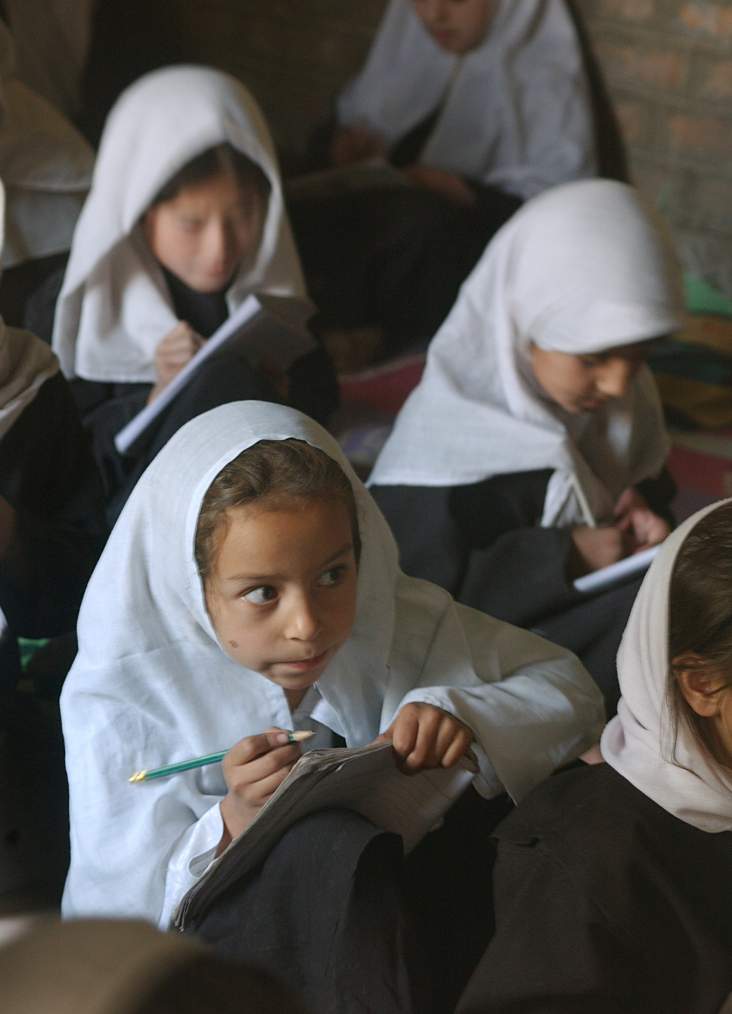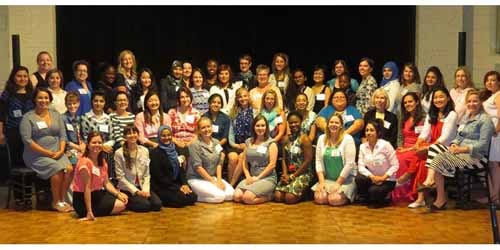For many young women around the world, going to school is a dangerous activity, a calculated risk that remarkably brave girls are willing to take in the hopes of a brighter, better future for themselves, their families, and their communities. When girls are educated, women lead. And, when women lead, democracy is strengthened and threats of violent extremism are diminished. Our collective future will be brighter and safer if the empowerment of women through increased opportunities for education is a focus of all nations around the world, including the U.S.
Global terror is a real, present threat to the United States. A Department of Defense memo on “Enhancing Security and Stability in Afghanistan,” said that the Afghanistan-Pakistan border is currently hotbed of “extremist sanctuaries” for numerous terrorist groups, including al Qaeda and ISIL. Terrorist groups are a threat to stable, lasting democracy in the Middle East, a great interest of the United States. Such groups, including al Qaeda in Afghanistan, “remain a threat to the United States and its interests.”
If the United States hopes to simultaneously strengthen democracy and decrease sources of terrorism in the Middle East, South Asia, and Africa, it would be wise to focus even greater efforts than those currently in place on the empowerment of women in the region. According to research done by Harvard University psychologist Steven Pinker on female leadership, “over the long sweep of history, women have been and will be a pacifying force.” And, as Secretary of State John Kerry explained in a 2013 op-ed, “No country can get ahead if it leaves half of its people behind. This is why the United States believes gender equality is critical to our shared goals of prosperity, stability, and peace, and why investing in women and girls worldwide is critical to advancing U.S. foreign policy.” In this time of bombings and terror, we too often forget one source of light in the world—women and girls—and the ways in which empowering this group will lead to a better, safer world for us all.
There is a reason that terrorist groups around the world, like Boko Haram in Nigeria and the Taliban in Pakistan and Afghanistan, target young women who are educating themselves—they are scared of them. Extremist groups are well aware of the fact that educated girls and women are a threat to their very existence. As The New York Times columnist Nicholas Kristof wrote, “nothing can be more transformative for a society than educating girls.”

One solution lays in further increasing U.S. focus on the education and resulting empowerment of women in countries such as Pakistan and Afghanistan. After all, approximately sixty million girls are out of school around the world today, including more than three million Pakistani girls. These three million young women are a completely untapped source of stability, which could in turn lead to long-lasting democracy and a reduction in violent extremism, as women move into leadership roles that have previously been held by men.
A possible answer to this need for expansion is a two-fold public diplomacy campaign. First, the U.S. Department of State should continue to build on existing efforts to partner with locals in Pakistan and Afghanistan to organize courses for women and strengthen already existing schools for young women. The U.S. Department of State already has programs like this, including the successful U.S. Institute on Women’s Leadership beginning in Washington, D.C. each year. Also an example of excellent work currently being done to empower women, the 2014 Embassy Scholarship Program provided 62 women with full-ride, four-year scholarships to the American University of Afghanistan, to study topics ranging from English language to business.

The George Washington University Elliot School of International Affairs Global Gender Program has partnered with Lahore College for Women University in Pakistan for a three-year exchange funded by a grant from the U.S. Department of State. The program is a great example of the kind of two-way work that can be done in our global world, which will be beneficial to all parties involved. This exchange of female scholars is focused on, “globalization, internationalization of the curriculum, and cultural exchange,” which will benefit U.S. interests abroad. Providing increased funding to these types of programs, which are organized in tandem by U.S. and local universities, would be an excellent next step for the Department of State.
We need to redouble existing efforts to make sure that these types of programs are available to both bring female scholars to the U.S. and provide educational opportunities within their countries, and that these programs are available to and reaching all who are interested.
Thanks to the work of U.S. AID, approximately 2.6 million girls attend school in Afghanistan now, which is up from close to zero under Taliban rule. And, yet, educated boys still outnumber girls 2 to 1. Until that number is equal, the U.S. Department of State needs to maintain its growth of women’s educational initiatives.
Second, in our media strategy: we should further develop relationships with local elites and journalists, and work to expand the prevalence of press conferences and meetings on the importance of women’s leadership, empowerment, and education. It is important to find an effective way to explain the benefits of an empowered female population, and key to note that there might be cultural backlash against our campaign. We will be more effective in these press conferences and workshops if we set up local elites and journalists to be the community messengers of these benefits, rather than U.S. officials.
According to a 2015 U.S. Advisory Commission for Public Diplomacy report, about 9.37-percent of Afghanistan’s total public diplomacy budget was spent on aid for women and civil society in 2014. One must acknowledge that this amount—which comes out to approximately $5.294 million—is significant. And, yet, the successes of these programs, and the benefits that would come from expanding them even further, validates increased spending in this sector.
More peaceful communities create space for more stable democracies and discourage violent extremism, which is why increasing our focus on women’s education in countries like Pakistan and Afghanistan should become an even greater priority for the U.S. Department of State in the coming years. As Secretary Kerry explained, “U.S. diplomats everywhere work to integrate women fully into peace negotiations and security efforts because bringing women’s experiences, concerns and insights to the table can help prevent future conflict and build more lasting peace.
The views and opinions expressed in this article are those of the author and do not necessarily reflect the official policy or position of the Institute for Public Diplomacy and Global Communication.
